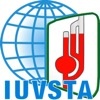Visual Aids Program
During the 2007-2010 triennium, this series of educational material was updated and changed to Microsoft Powerpoint format.
The current Editor is Prof J-J Pireaux, Facultés Universitaire Notre-Dame du Paix, Namur, Belgium
Thus, English Powerpoint slides are now available for:
| Module 1 | Fundamentals of Vacuum €70 |
Module 2 | Total Pressure Measurements in Vacuum €70 |
| Module 3 | In preparation | Module 4 | Partial Pressure Analysers and Analysis €70 |
| Module 5 | Thin Film Deposition €70 |
Module 6 | Leak Detection €70 |
This material will soon be available for download from the IUVSTA website. Check the navigation bars for a notice when it is ready.
Module No 5 Thin Film Deposition
The primary intention of this module is to provide the material upon which a lecturer can base short courses on thin film deposition. It assumes a general knowledge of the field on the part of the presenters and is not intended as a stand alone text for self-teaching.
The presentation is divided into the five sections listed below. The first three sections form a comprehensive presentation of the most common techniques used for the deposition of high quality thin films, i.e. evaporation, chemical vapour deposition and sputter deposition. Section IV describes the general features of nucleation and growth of thin films. Concepts reviewed here are relevant to all three growth techniques. The final section summarizes the ways in which fast particles modify the properties of thin films. This section is most relevant to sputter deposition, but also applies to any other process in which fast particles bombard a growing film. Whilst the most significant features of each topic have been considered, some points have been omitted in order to keep the package to a reasonable size. For example, hybrid processes such as activated reactive evaporation and plasma spraying are not specifically treated. Details of atomic processors or deposition conditions are not described but may be found in sources listed in the bibliography provided with the text.
Section I: Evaporation (16 slides)
Section II: Chemical Vapour Deposition (33 slides)
Section III: Sputter Deposition (41 slides)
Section IV: Film Nucleation and Growth (23 slides)
Section V: Modification of Thin Films by Energetic Particles (15 slides)
With a total of 128 slides this presentation is the largest and most comprehensive of the visual aids modules. It covers a wider range of topics, taken to a much greater depth than the module it replaces (Part 5 “Vacuum Deposition”).
This module introduces the electronic format to the visual aids programme. This very large unit to be sold for $100 US or €80 euros. The material will normally be distributed on a compact disk . It will be easy for the lecturer to make slides for the overhead projector directly from the CD. For lecturers who do not have access to the facilities to make slides transparencies will be available.
This module can be purchased by applying to the French Vacuum Society in Paris or the American Vacuum Society in New York. Further information can be obtained from : John Robins e-mail robins@physics.uwa.edu.au
